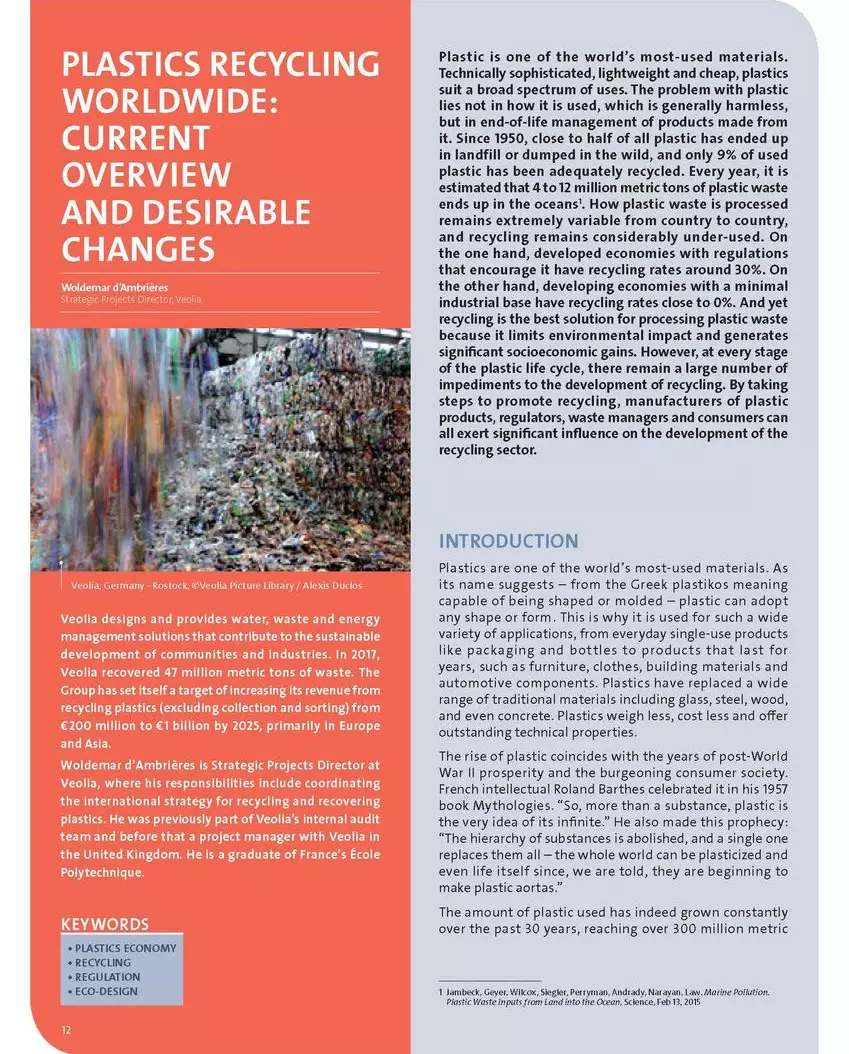Par Woldemar d’Ambrières
Strategic Projects Director, Veolia
Plastic is one of the world’s most-used materials. Technically sophisticated, lightweight and cheap, plastics suit a broad spectrum of uses. The problem with plastic lies not in how it is used, which is generally harmless, but in end-of-life management of products made from it. Since 1950, close to half of all plastic has ended up in landfill or dumped in the wild, and only 9% of used plastic has been adequately recycled. Every year, it is estimated that 4 to 12 million metric tons of plastic waste ends up in the oceans1. How plastic waste is processed remains extremely variable from country to country, and recycling remains considerably under-used. On the one hand, developed economies with regulations that encourage it have recycling rates around 30%. On the other hand, developing economies with a minimal industrial base have recycling rates close to 0%. And yet recycling is the best solution for processing plastic waste because it limits environmental impact and generates significant socioeconomic gains. However, at every stage of the plastic life cycle, there remain a large number of impediments to the development of recycling. By taking steps to promote recycling, manufacturers of plastic products, regulators, waste managers and consumers can all exert signifi cant infl uence on the development of the recycling sector.



